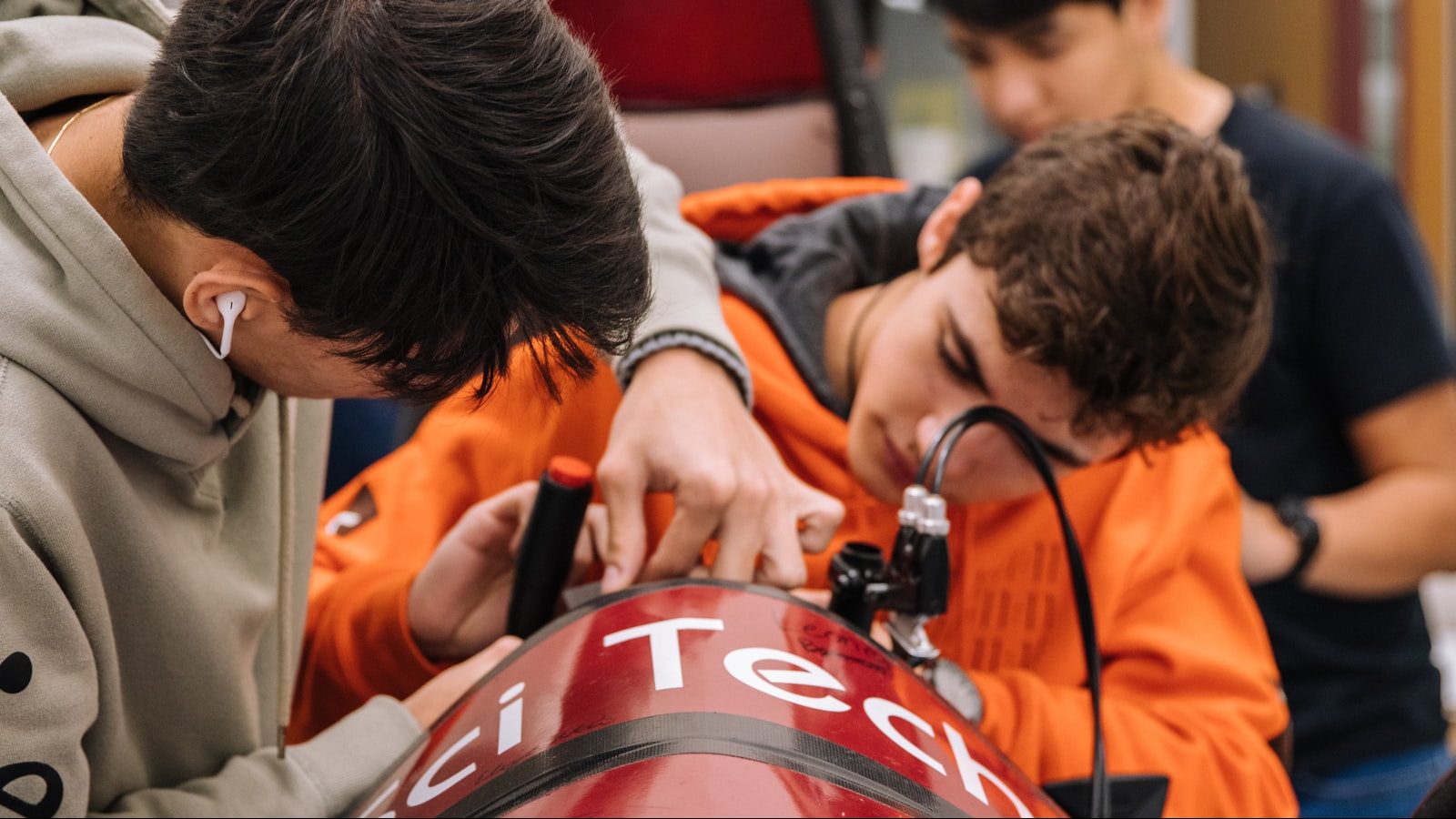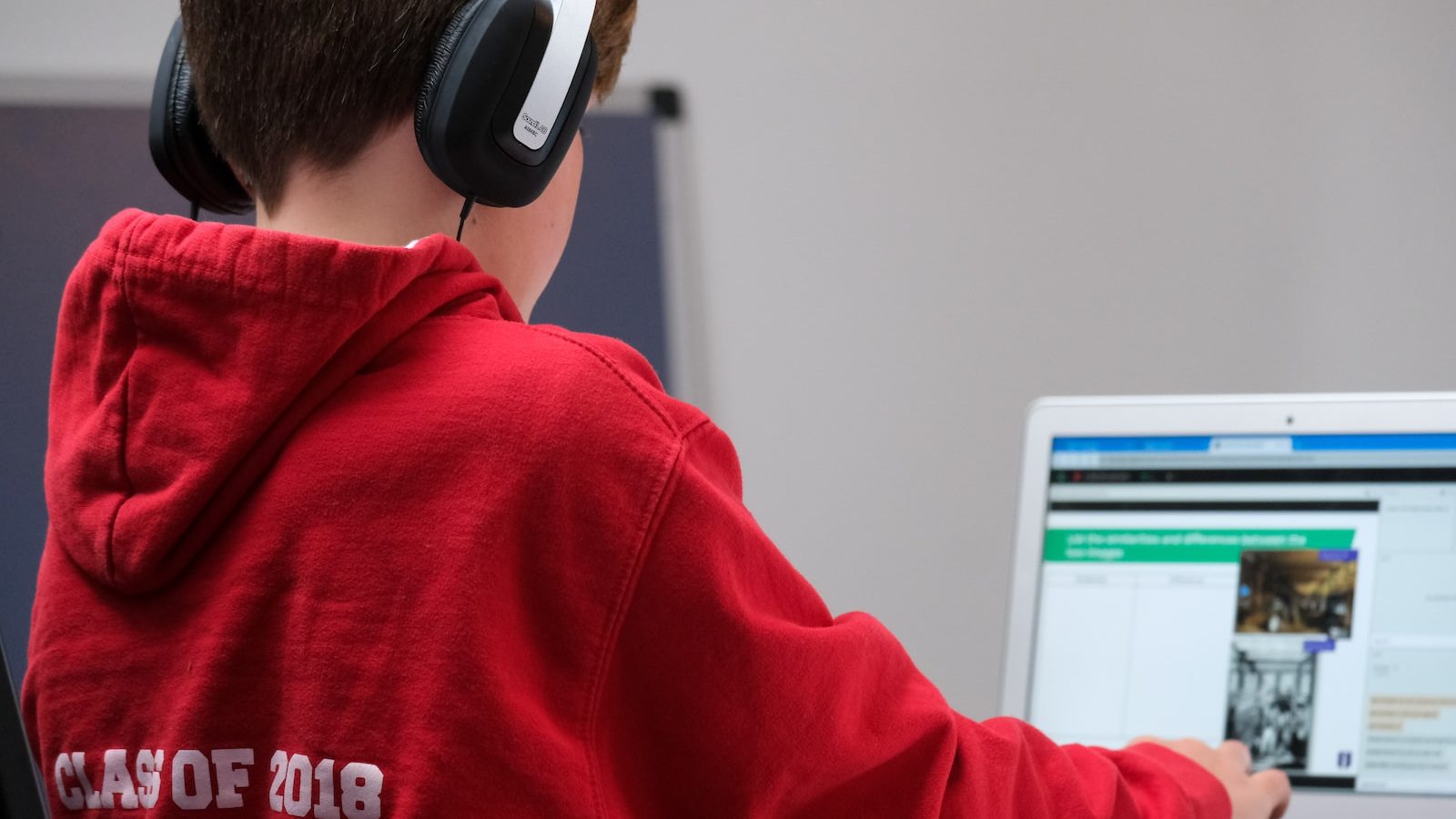The quest for meaning at work begins by teaching lifelong learning in the classroom
People in increasing numbers are craving meaning and purpose at work. New insights gleaned from our Future of Education Convening indicate that adopting attitudes of lifelong learning in the classroom benefits students later in life as they navigate professional development.
Challenge:
Many people lack a sense of meaning and purpose in the workplace
Opportunity:
A coaching lens can help foster lifelong learning approaches that bridge education and work
Impact:
Empowered students become purpose-driven adults who affect social good
Wisdom Weavers
An attitude of lifelong learning must begin early
In traditional education models, a clear line separates the boundaries of school and work: students go to school and emerge at graduation as fully formed workers. Newer trends that view education as a continuous process best serve young people entering the workforce. By removing artificial boundaries separating education and work, future generations are empowered to adopt a posture of lifelong learning that increases feelings of purpose.
Purpose and meaning enable people to flourish throughout their careers
One way to support feelings of purpose in emerging workers is to increase meaning-making as a workplace value. According to adult education specialist and Wisdom Weaver Jayne Fleener, “meaningfulness is going to become…very important for work. Work becoming not just what you do to make a living but tied to self-actualization.” A person’s identity is increasingly tied to professional pursuits, leading to satisfaction and overall workplace success.
Similarly, for Wisdom Weaver Olli-Pekka Heinonen, a primary task of society is determining what is meaningful by connecting with others and caring about ethical considerations impacting the world. Chiming in with Jayne and Olli-Pekka, Wisdom Weaver Anthony Mackay sees the work of meaning-making as an essential component to overhauling present educational systems and mindsets impacting educational models:
“We’ve been talking about the system and saying that it will require shifts in practice, it will require some shifts in structures, and we’re saying it requires shifts in mindset. We’ve tended to say in the past, I think that this means we need levels of public awareness, we need levels of professional engagement, we need all of the stakeholders involved, and we need political will.”

Extreme disparities in income and social structures prevent many young people from aspiring to careers that enable self-actualization. Mackay argues that education must expand access to employment that fosters meaning and purpose, though these changes will not be easy to implement.
Social instability has prompted many people to think more deeply about why they work
Jayne explains that “social metaphors” are ways people express their expectations of how things should be. She finds that the COVID-19 pandemic was a catalyst for shifting social metaphors about what work should mean. Many people changed their view of work from purely a source of income to a source of meaning and purpose. One of the first questions people asked about their jobs in the weeks after quarantine ended was whether their work functions required them to be in the office. Many resisted their daily commute after working from home for weeks and sometimes months.
Coaches can support teacher wellbeing by fostering greater communication between administrators and teachers to promote self-care.
Shifting views towards work-life balance led to four-day workweek pilot programs in Iceland and the U.K. After Covid-19, the four-day workweek and flexible schedules have become increasingly popular among working parents and people who struggle with chronic illness. These changes reflect a widening desire for work to occupy a less dominant role in life, allowing additional time and energy for the dimensions of life that are more fulfilling and individually rewarding.
Accompanying this shift in values surrounding work and life, teachers are also calling for work conditions that support well-being. Low wages, large class sizes, and limited training opportunities are driving a global shortage of teachers. For communities to increase teacher retention, reduce burnout, and recruit new educators, they will need to work alongside teachers to improve work conditions in the classroom. An investment in teacher well-being is an investment in educational quality.
Coaches can address teacher burnout by:
- Supporting administrators and teachers to implement open lines of communication
- Providing teachers with diversified support in the classroom
- Guiding teachers to embrace self-care as an essential component of career success
Education must prepare young people for change
As social metaphors about work continue to evolve and become centered on meaning and purpose, the role of education will need to adjust accordingly. Starting in the earliest phases of childhood education, teachers can implement lifelong learning systems of student empowerment. Social investment in education should also prioritize teacher satisfaction and well-being. When teachers feel empowered and supported in their professional development, they can model lifelong learning skills to their students.
Educators might also be aware of the impact of racial and cultural divides, disability, and other factors impacting student performance. These systems must address various interconnected concerns on a socio-economic level to effect true change, inspiring students by providing tools to advance beyond limitations relating to resource access.
Demonstrating to students the importance of purpose and meaning through lifelong learning systems in the classroom will inspire them as future workforce members to apply these principles in their career pursuits.
Coaching Empowers People
Coaches can partner with administrators to envision holistic education systems, prioritizing the pursuit of lifelong learning. Yet before implementing these changes in the classroom, the present crisis of burnout in the field of education needs to be addressed first. Since January 2020, 600,000 public school teachers have stopped teaching, and 55% of educators are considering leaving their profession earlier than previously anticipated.
Coaches can be resources to help address the crisis of teacher burnout. Cultivating educational systems that center on student-directed learning and growth empowers teachers—without adding extra burden—to nurture empowerment within students. Student-directed learning enables students to see purpose and meaning as central components of their educations and lives. These empowered students will one day become emboldened adults who enter the workforce with a collective, purpose-driven ethos, building a more just and sustainable future.
Manifesto for the Future of Education
34 Wisdom Weavers from 15 different countries gathered to reimagine the future of education, using the lenses of coaching, pedagogy, sustainability, technology, social transformation, and collaboration. These discussions inspired us to craft a call to action — a Manifesto for the Future of Education — that establishes a vision for transforming education around the world while integrating the practice of coaching as a catalyst for positive change.






